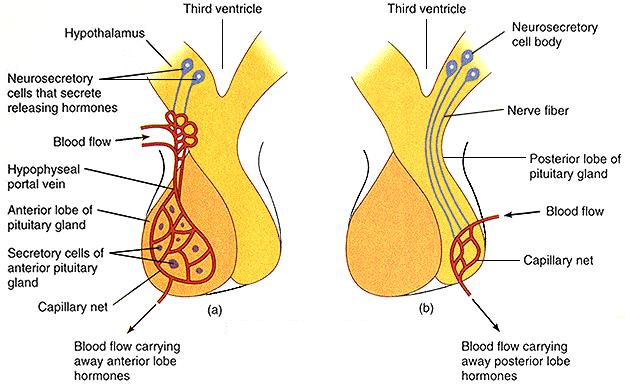Posterior pituitary function
The posterior pituitary commonly known as neurohypophysis comprises the posterior lobe of the pituitary gland and is portion of the endocrine system. In spite of its name, the posterior pituitary gland is not a gland; instead, it is largely a group of axonal projections from the hypothalamus which terminate behind the anterior pituitary gland.
The posterior pituitary consists mostly of neuronal projections (i.e., axons) extending from the supraoptic and paraventricular nuclei of the hypothalamus. Such axons discharge peptide hormones into the capillaries of the hypophyseal circulation. Additionally to axons, posterior pituitaries also have pituicytes, specialized glial cells similar to astrocytes.

Posterior pituitary function in patients with supposed diabetes insipidus is generally assessed by a water deprivation test. Alternatively, a nonosmotic stimulus like hypoglycemia might be used to stimulate the vasopressin secretion. Plasma AVP measurement might assist in the diagnosis and, particularly, differential diagnosis of diabetes polydipsia and insipidus. Though, AVP measurement is cumbersome. The Copeptin, stable C-terminal glycopeptide of the AVP prohormone, is stoichiometrically secreted from posterior pituitary.